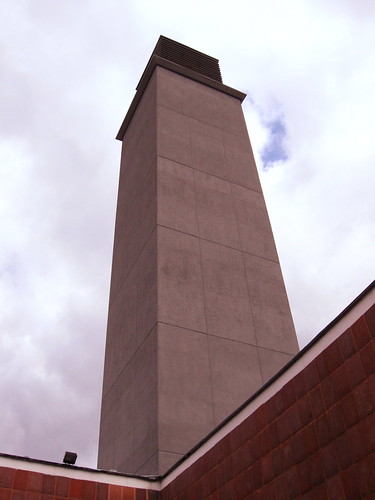
The Carillon of the Belgian Pavilion from the 1939 New York World's Fair. You can see it from interstate 95 driving through Richmond.
Constructed of native Belgian materials and designed by Henri van de Velde, the pavilion is a fine example of Art Nouveau architecture. My Mother used to point it out as we drove through Richmond. You could see the tower from the highway.
The exterior of the pavilion featured two large sandstone relief sculptures by Oscar Jespers and Henry Puvrez depicting Belgians at work and the Belgian Congo. These works were impressive in their own right.
But how did this significant piece of international architetural history end up in Richmond? The answer has to do largely with the situation in Europe. By the time the fair closed, Germany had occupied Belgium and the Belgian government was in exile. The original plan to ship the building and its 35 bell carillon back home was no longer possible. The Belgian government in exile decided to seek a fitting home for the building at an American institute of higher learning and Virginia Union University won the honor.
The President of the University, Dr. John Ellison, led the successful effort to raise the funds needed to move the building and the rest is history. The building housed a gymnasium, laboratories and the library. Today it houses athletic offices and a fitness center.

Sandstone Relief by Oscar Jespers and Henry Puvrez depicting life in the Belgian Congo.

Sandstone Relief by Oscar Jespers and Henry Puvrez of Belgians at Work.
Correction: The carillon of 35 bells is not located in the Belgian Friendship Building on the Virginia Union University campus. The bells are located in Hoover Tower at Stanford University in Palo Alto, California. Before the Belgian Pavilion was dismantled and sent to its new home in Richmond Virginia, its carillon was removed and presented to Former President Herbert Hoover for his new library at Stanford. The bells were given to him upon his request because of his work with the Belgian government following WWI. See http://www.bellsforpeace.org for the full story.
ReplyDelete